Reactor piping is very critical due to the high temperature and pressure of the fluids it carries. Reactors are used in the process units to contain catalysts. It promotes the chemical transformation of feeds or to remove undesired materials from the feed. They are generally cylindrical in shape, with hemispherical heads and axis vertical to the grade. Spherical reactors are used in methanol and catalytic reforming units. Catalysts are used to promote all chemical reactions taking place inside the reactor.
Principle of Operation of Reactors
Feed enters the reactor at the top. Catalysts are packed along the length of the reactor. As the feed travels down the reactor it is converted into the desired product. The catalysts promote the chemical reaction. The desired product is removed from the bottom of the reactor.
Catalysts in Reactor
Catalysts are generally ball or pellet-shaped and come in a variety of sizes depending on the process requirements. Catalysts tend to get saturated after a while and their efficiency decreases. They need to be regenerated. Catalysts need to be replaced after they get poisoned as they cannot be regenerated.
Reactor Internals
The Internals of reactors is very limited. These include Catalyst bed supports, screens, inlet baffles, outlet collectors, and temperature probes.
Piping Design considerations for Reactors
Locating the Reactor
The piping designer should economize the piping interconnections between the reactor and its adjacent equipment (pumps, feed exchangers, heaters, etc.) when locating the reactor. The following documents are needed to locate the reactor on the plot plan.
The reactor is located on the plot plan as per the process sequence dictated by the P&ID. Reactors are best located on either side of the pipe rack, as close as possible to the heater as dictated by safety and layout guidelines. This is to minimize the costs of the high-temperature piping. Adequate space must be available for operator movement, maintenance access, and catalyst loading and unloading. Reactor transportation, erection, and other constructability issues should also be investigated while finalizing the location on the plot plan. Locating close to an access road reduces maintenance efforts.
After the reactor has been located on the plot plan, the following jobs are carried out.
- Elevation Review & Support selection
- Nozzle orientation
- Platform and access requirement
- Support cleat location detailing
- Lifting lugs and earthing lugs location planning
- Finalizing Vessel Name Plate location
Reactor elevation calculation and support selection
- The Bottom Tan Line elevation is fixed by the following two requirements.
- Catalyst unloading requirements – Catalyst unloading is accomplished by a nozzle at the bottom head, inclined to the tan line at a specified angle, and radial to the head. Sufficient clearance should be available for the movement of a catalyst removal truck under this nozzle.
- Outlet nozzle – This nozzle is at the bottom of the hemispherical head, and the centerline elevation of the nozzle is lowered accordingly. This becomes a deciding factor in calculating the clear space required between the bottom of the outlet piping and HPP. Springs below the outlet piping should be considered before setting the final elevation.
Reactor supporting arrangement
- Reactors are generally supported by the following methods
- Skirt Supported with a foundation on grade – most preferred. Skirts are straight for short reactors and flared for tall ones.
- Lug supported – Lugs on the reactor supported on concrete piers.
- Ring girder supported – On tabletop (when the bottom nozzle needs to be accessed)
- Skirt supported – On a tabletop
- The choice of support may fix the reactor elevation for some layouts.
Reactor Nozzle orientation
The following documents are required for orienting the nozzles.
- Process vessel sketch
- Level co-ordination diagram
- P&ID
- Plant layout specification
- Nozzle summary
- Insulation requirements
- Plot plan
General considerations for locating nozzles
Generally, the following nozzles are present on all reactors.
- Inlet nozzle
- Outlet nozzle
- Catalyst removal nozzle
- Instrument nozzle (Thermowell)
- Sampling nozzle
- Access Manhole
Orienting the nozzles
While orienting these nozzles the following points are to be considered.
- The feed inlet is on the top of the hemispherical head. Maintenance access on the top of the head can be separated or combined with the feed inlet, a gooseneck spool serving both purposes.
- The outlet nozzle will be on the bottom head, and on the center of the hemispherical head. This is of gooseneck type for vessels with skirt-type support and the nozzle flange must be brought outside the skirt. Orientation is generally chosen to minimize piping to the downstream equipment keeping the line flexible enough from a stress point of view.
- The catalyst removal nozzle is to be oriented toward the allocated catalyst drop-down area.
- Thermowell nozzles require special consideration with regard to the pull-out area required for the thermowell element. Nozzles are either mounted radially hillside or on the top head of the reactor. A platform is a must at these nozzles.
- The sampling nozzle is to be oriented towards an accessible area.
- Skin thermocouples are equally placed all around the circumference of the reactor and along the length of the reactor. They should be oriented last, clearing all obstructions.
Nozzle standouts
The feed nozzle on the top of the reactor should have its flange a minimum of 180mm and a maximum of 1000mm from the TOG of the access platform. Consideration for access to nuts under the flange is the be given while calculating the standout. Nozzles on the shell are to have minimum standout that clears the studs from reactor insulation. Reactors are thick shell
Preparing the Nozzle Orientation Document
This document should show the plan, and if required, the elevation of the vessel with the location of nozzles on the same. Nozzle orientation is to be from the plant north and taken clockwise. Dimensioning should show the radial distance of the vessel flange from the vessel center. A nozzle summary table indicating the Nozzle number, service, size, rating, flange face, elevation from the bottom tan line, and stand out from the vessel center is to be included in the drawing. For nozzles on the vessel heads, the F/F stand out from the bottom or top tan line should be given in lieu of elevation from the bottom tan line.
Miscellaneous Data to be included in Nozzle Orientation Document
Lifting Lugs
Generally, reactors can be lifted with two lugs welded below the top tan line. A tailing lug is to be provided near the bottom of the skirt for tailing operation. The preferred locations should be marked on the nozzle orientation drawing.
Earthing Lugs
Two earthing lugs, ideally 180 degrees apart should be provided on the lower portion of the skirt. The same should be marked on the nozzle orientation drawing.
Name Plate
The nameplate should be located at a prominent location and marked on the nozzle orientation drawing. Care should be taken that the nameplate projects outside the vessel insulation.
Vessel Insulation Clips
Indicate that insulation clips/rods are required for holding the vessel insulating bands.
Platforms and Access Ladders
Platforms are required for the following purposes
- Operational access to valves and instruments, etc.
- Maintenance access to manholes for catalyst loading
- Mid landings (when the elevation difference between two platforms exceeds 9 m)
Calculating the TOG elevation
The platform on the top head of the reactor TOG elevation from the top of the reactor head = Insulation thickness + 50 mm clearance + Platform member depth (assume 200 mm minimum) + 30 mm grating. Round off to the next higher multiple of 10.
Platforms on the cylindrical portion of the reactor
- Platforms are to be made independent of the reactor in some cases. An Independent structure around the reactor is to be provided at the required elevations.
- Nozzles – Platform to be 500mm (minimum) below the bottom of the flange of any nozzle.
- Mid landing platforms-These are to be provided when the elevation difference between two platforms levels exceeds 9m. The mid landing to be ideally evenly placed between the two platforms.
- Two platforms being serviced by a single ladder should ideally have an elevation difference of 600mm between them.
- The platform elevations (TOG) should be rounded off to the nearest multiple of 10.
Sizing the Platform of the Reactor
The platform on the top head of the reactor
This platform should be rectangular. It should cover all the nozzles, flanged piping joints, valves, instruments, davits, etc. that need access for operations and maintenance. Ideally, a minimum space of 750mm should be provided around 3 sides of a nozzle. Side entry access to the platform should be the first preference.
Platforms on the cylindrical portion of the reactor
This platform should be rectangular. Its extent should cover all the nozzles, instruments, etc. that need access for operations and maintenance.
Determining the platform width
- The inner radius of the platform should clear the reactor insulation by 50 mm.
- Platform width is dictated by operator access requirements.
The following considerations are to be taken care of when deciding the width.
- The platform should extend along the thermowell element removal area.
- A free landing space of 750 mm is to be provided for access ladders.
- Platforms may be locally extended width-wise at regions where vertical pipes pierce the platform, maintaining a minimum of 750 mm clear space from the insulation of piping to the handrail of the platform.
- When controls are located on the platform, the width of the platform is to be 900 mm plus the width of the controls.
Access ladder
- Access ladders are to be vertical. They should have a clear climbing space of 680 mm. Toe clearance from the centerline of the ladder rung to any obstruction to be 230 mm.
- A cage is to be provided for all ladders at an elevation of 2300 mm and above. Side entry ladders are the first preference.
- The ladder is to be oriented so that it can also be utilized for access to instrument connections that are inaccessible from the working level.
Preparing the Platform Input Document
Platform and Access ladder input is transmitted to Civil via a platform input drawing.
The platform on the top head of the reactor:
This should clearly indicate the TOG elevation from bottom T/L, dimensions of the platform, and its location w.r.t. the vessel center lines. Grating cutout requirements (indicating size, shape, and location), required swing direction of the self-closing gate, and davit location needs to be marked on the same drawing. Any pipe supports/monorails intended to be taken from the platform should be marked.
Platforms on the cylindrical portion of the reactor
This should clearly indicate the TOG elevation from bottom T/L, the dimensions of the platform, and its inner radius from the vessel axis. Grating cutout requirements (indicating size, shape, and orientation), required the swing direction of the self-closing gate. Any pipe supports/monorails intended to be taken from the platform should be marked. Orientations of access ladders should be marked on the respective platform elevation plans.
Orienting piping on the face of the reactor
It is imperative that the orientations, arrangement, and standouts of various piping traveling down the face of the reactor are calculated keeping in mind the following points.
- Piping should drop towards the pipe rack side, clear from any platforms.
- The piping can travel down the reactor radially, with independent supports.
- The clear minimum space between the pipe and shell is to be 300 mm excluding any insulation.
- The pipe with insulation should clear the stiffening ring and its insulation.
- The minimum orientation angle between two adjacent pipes should be calculated to clear the support bracket of one pipe hitting the insulation cladding of the adjacent pipe.
- Support points of adjacent piping should be offset to save space between them. as the support brackets will have to be oriented so that there is no clash between the cleats of the supports, or between the support members and bracings.
Supporting Piping from Reactors
Piping should be supported from the vessel or its platform when it is difficult to construct civil support from grade or adjacent structures at the required location. Vessel support should also be taken to take advantage of lower differential thermal growth between vessel and piping, as compared to piping and civil support. A judicious selection of support locations can eliminate the requirement for springs.
Thumb rules for supporting piping from reactors
- Small loads can be transferred directly to the platform members. These include rest, one-way stops, two ways stop, or hold-down supports and the piping layout should be done accordingly.
- Large loads should be transferred to the vessel shell and the piping layout should be done such that the platform members do not interfere with these independent supports.
- The first piping support is rest support and it should be as close to the equipment nozzle as possible. The second and subsequent supports are guides and they are to be located as per the allowable piping spans available in the tables. For tall reactors, another rest support may be needed. This is done by providing spring support which will take care of the differential expansion of the vessel and piping.
- Piping support should not cause any hindrance to the movement of personnel.
- Vessel growth should be considered to check the clash of piping support with any adjacent piping or structure.
Types of supports
Supports welded to piping
Horizontal trunnions welded to the pipe take the vertical load of the pipe. They are generally used in pairs, set apart at 180°. Their axis is perpendicular to the line drawn from the center of the reactor to the center of the pipe at the location of support. Trunnion lengths should be adequate so that their ends project 50mm from the outer edge of the support bracket member Shoes are provided for guidance purposes and to prevent insulation cladding from hitting the support bracket member. Adequate shoe length is to be taken for differential movement of pipe and vessel.
Supports welded to the vessel
Support brackets (non-braced and braced) and Guide brackets (non-braced and braced) are the most common support arrangements for vertical piping.
Calculating the minimum dimensions of support members
Load bearing supports
Trunnions or springs transfer load to these supports. Minimum clear inside dimensions are calculated so that the insulation cladding is 50 mm away from the inside of the structural member or support plate of the spring.
Guide supports
A bare pipe is guided directly by the guide bracket. Shoes are provided in pairs, 180° apart, for lines with insulation. These can be single pairs or double pairs depending upon the type of guiding required at that location. The guide gap required by stress is to be added to the end-to-end dimensions of the bare pipe or pipe with shoes.
Preparing the Civil Pipe Support (CPS) Input Document
CPS input is transmitted to Civil and Mechanical via a CPS input drawing. A sketch clearly indicating the TOS, dimensions, and CPS location with respect to the vessel centerline needs to be drawn. Any requirement for additional support plates for springs or trunnions is to be indicated. A summary table indicating the CPS number, TOS, stress file number, and corresponding node number from the Nozzle cleat load information chart needs to be created. The Nozzle cleat load information chart indicates the various loads acting at the support location under various conditions. It is to be attached along with the CPS input document.

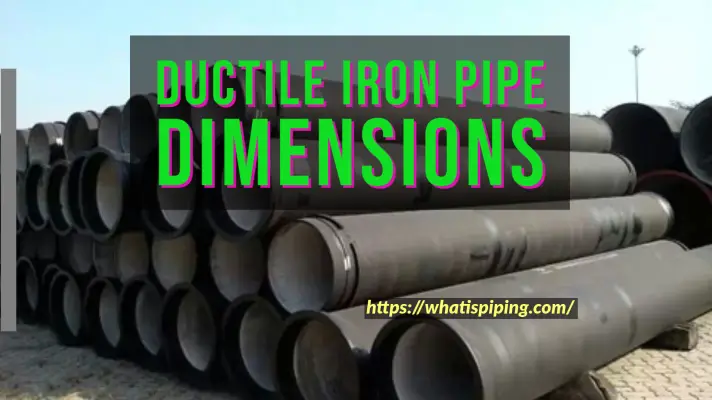
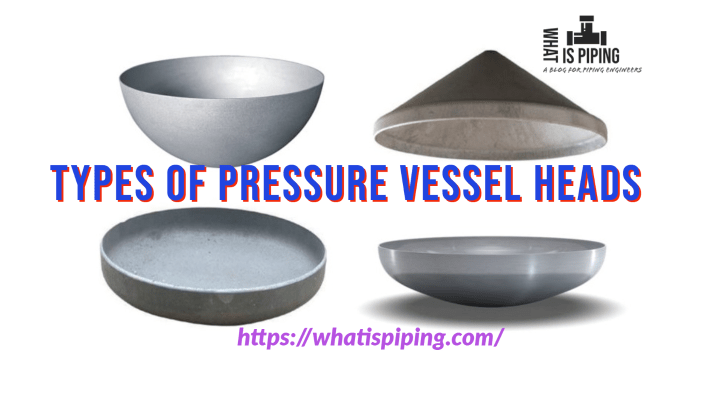
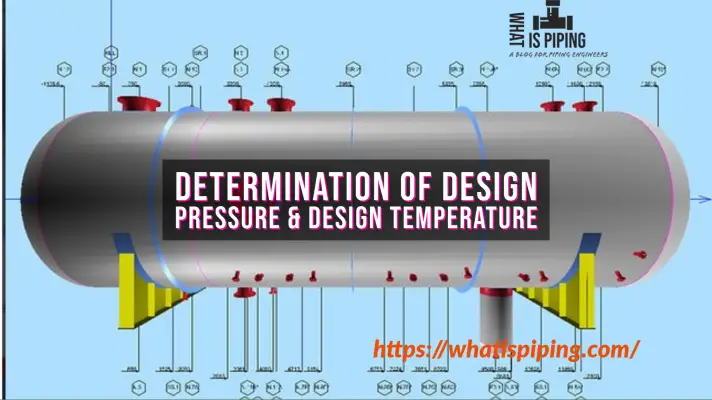

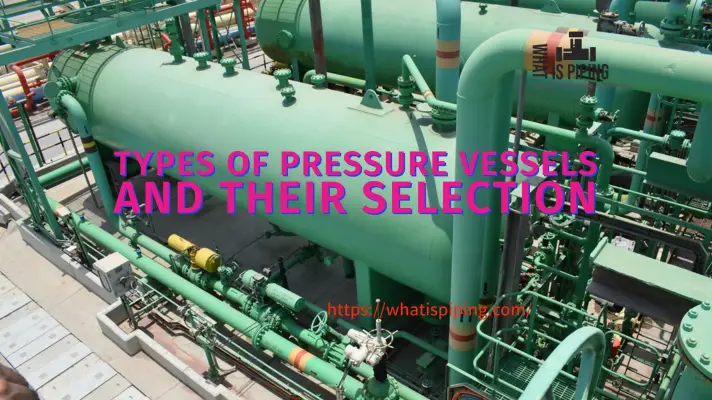
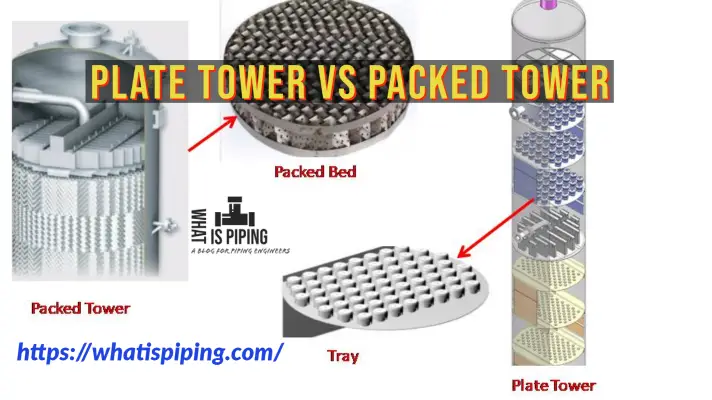
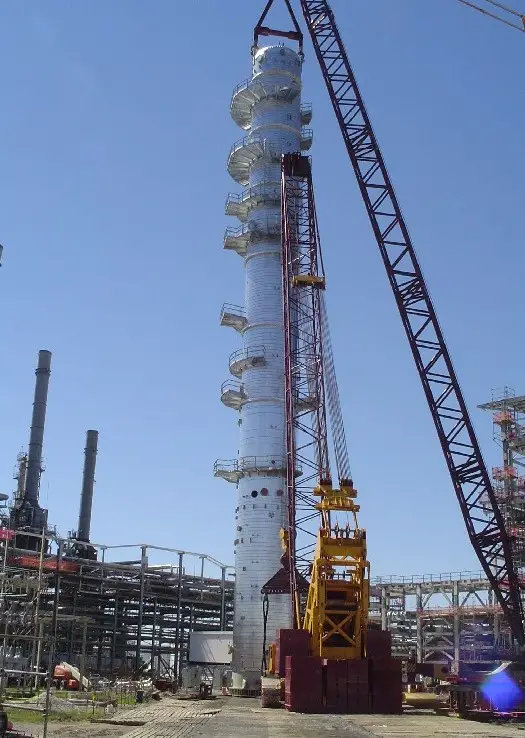

Nice but can you support us about maintenance of reactor
Good article about reactor.Thanks for sharing.
Dear Anup,
Can you suggest the draw off nozzle elevation from Grade as well as from platform in case of HDT VGO Reactor ?
as per new OSHA guideline cages are no longer required for any height.
it is only can be considered if client ask.